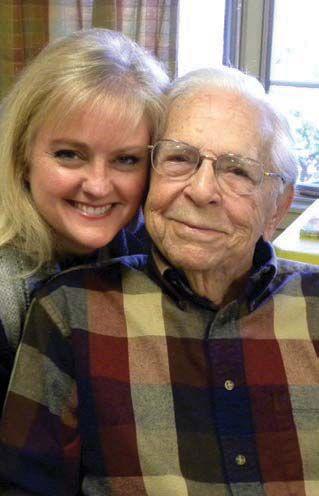
6 minute read
SPREA DING CHRISTMAS
T hen as now, though, Dallas ISD’s trus tees weren ’ t in agreement about tha t g oal. T he southern Dallas cohor t of t ru s te es b eli e ve d i f pa re nt s w a nte d their s tudents to a ttend the magne ts, “they should buy houses inside the school distric t.”
By 1989, 17 percent of Book er T.’s s tudents were suburban transfers, despite a waiting list of almost 400 Dallas ISD -resident students. The board wasn ’ t happy about so many outsiders taking up seats, according to a September 1989 Dallas Morning Ne ws stor y Some trustees wanted to “pre vent outside enrollment until all DISD students interested in the school were ser ved.” he board left the door to the suburbs open, perhaps because white s tudents were leaving Dallas ISD too quickly By 2003, whites made up only 6.7 percent Dallas ISD enrollment. hen desegregation ended.
“We weren ’ t created for them; we were created for DISD s tudents,” said thenschool board member Rene Castilla.
Ultimately, the decision came down ace. Booker T. was 60 percent white tha t time (compared to 17 percent tric t-wide), and the board opted to a d m i s s i o n ( o n e - t h i r d e a c h ) at i t s magne ts be tween white, black and Hispanic students.
COUR T-ORDERED DESEGREGATION SHACKLES OFF
year, Dallas ISD was legally required admit students to its magne t schools mee t race quotas. T he ne xt year, that tice became illegal when the cour t released the dis tric t from its desegretion order s par t of the terms of its release, Dallas ISD made promises to the cour t about how it would manage the magnets going for ward. T he schools had led the distric t out of segregation. What would become of them now that the cour t had declared Dallas desegregated?
T he answer is in the “Declar a tion of Commitments and Covenants” Dallas ISD made to the cour t in 2003:
T h e m a g n e t s w o u l d n o w e x i s t t o “ o ff e r u n i q u e e d u c a t i o n a l o p p o r t u n i t i e s through specialt y c urric ula tha t cannot be found within the neighborhood s ch oo ls ” T he d is tr ic t al s o p l ed g ed t o “be diligent in its e ffor ts to identif y all e l i g i b l e o r q u a l i fi e d s t u d e n t s ” a n d t o “care fully monitor the selec tion process so tha t no s tudent or e thnic group is unfairly e xcluded.”
By 2005, an internal review of these commitments showed that 110 new outof-district students were admitted to magnet schools, while 446 district students were left on a waiting list. This “excluded about 25 percent of DISD students from the program,” the report notes.
“The selection process should be reviewed to determine if a limit is needed.”

Board policy at the time welcomed out-of-district students. In general, it still does. The district receives state funding for each student who attends its schools. With private schools abounding and charter schools ramping up efforts, Dallas ISD typically doesn’t turn away volunteer recruits. In fact, its new collegiate academies at eight high schools are an explicit effort to attract students from charter and suburban schools.
That’s not the case at the magnets, however, where board policy dating back to 2010 gives Dallas ISD students precedence over out-of-district students.
So why are there still eye-popping numbers of students at some of the district’s most elite magnet schools?
For starters, parents “flat-out lie” on their applications, says Flores, the North Dallas trustee and former Booker T. parent. The fact that parents give false addresses, with their kids participating in the deceit, is “the part that really irks me,” he says.
What exacerbates the problem at Booker T., he says, is that some of the adults conducting the auditions required to gain entrance to the school also are being paid as tutors by parents in places such as Coppell and McKinney.
“To say that the auditions are rigged is being kind,” Flores says.
Dallas ISD is 70 percent Hispanic. Booker T. Washington is 27 percent Hispanic — a drop since 2003, when desegregation ended.
“Are you telling me there’s no Hispanic arts talent in DISD?” Flores asks.
Booker T.’s percentage of black students also has decreased in the 13 years since desegregation, down to 21 percent. But the school is significantly whiter (48 percent) and is 76 percent
Abdominal Pain
Back Injury
Breathing Problems
Chest Pain
Dehydration
Dizziness

Eye Injuries
Head Injuries
Major Burns
Stroke Like Symptoms
Allergies
Allergic Reactions
Bites
Colds and Coughs
Cuts
Earaches
Fevers
Flu
Sore Throat Rashes affluent in a district that is 90 percent low-socioeconomic.
DON’T ASK, DON’T TELL?
The fact that Dallas ISD’s top magnets are peppered with suburban students is fairly common knowledge among trustees, at least anecdotally.
“I’m perplexed by that,” says Trustee Dustin Marshall, who was elected in June to represent East Dallas and Preston Hollow. “There seems to be more than sufficient demand within the boundaries of DISD.”
Audrey Pinkerton, the new Oak Cliff trustee whose daughters attended Booker T., also acknowledges the “concern that has been expressed by some parents and community members [whose] perspective is, ‘We have kids coming from cities who are not paying taxes to DISD, and we are, so our kids should get first preference.’ ”
This topic came up at a recent town hall meeting Pinkerton hosted. A mother in the audience said she knew two Highland Park families who rented apartments in Dallas ISD so their children could attend Travis.
“I’m offended by that,” the mother told the crowd. “Is there any way to police that?”
Administrators, too, seem aware of the problem.
Keisha Crowder-Davis, Dallas ISD’s director of postsecondary success who has overseen the magnet schools since 1999, says that “our programs have always been for our in-district students. We triple check when they submit.”
“The funny part is parents tell on each other,” she says. “They’ll call and say, ‘This student got in, and I know he doesn’t live in the district because he lives across the street, and we used our real address.’ ”
The district’s policy requires students to show a utility bill, lease or mortgage agreement, or a notarized proof of residency to enroll at a magnet school. If something “looks abnormal,” Crowder-Davis says, Dallas ISD police are sent to the student’s purported place of residence.
However, Dallas ISD’s own numbers show that suburban students are still finding loopholes, and not just by the ones and twos but by the dozens.
Crowder-Davis says Dallas ISD has made “a concerted effort for the past several years to only accept in-district students.” That seems to have made an impact at Booker T., where the number of suburban students has been reduced by more than half since 2009-10. At TAG and SEM, however, out-of-district enrollment saw an uptick during the past few years.

Even at Barack Obama Leadership Academy, a new all-boys school in southern Dallas that opened five years ago, outof-district students make up 10 percent of the small campus. In the academy’s first graduating class of 12 young men, the valedictorian was a transfer from DeSoto ISD.
The district will accept transfers if no qualified Dallas ISD students are on a waitlist, Crowder-Davis says. Part of the challenge, she says, is seeking out and recruiting those qualified students.
That’s not a problem in neighborhoods such as East Dallas. Woodrow Wilson and Bryan Adams high schools sent 104 students and 109 students to Booker T. this year, respectively — each claimed about one-eighth of the school’s seats.
The magnets admit the highest-ranking 30 percent of applicants, regardless of Dallas ISD home high school; the remaining spots go to the top applicants from each of the district’s 21 high schools. If a particular high school doesn’t have enough qualified students to fill its seat allotment, however, those leftover spots go to the next highest-ranking students overall.

That’s how hundreds of students from Bryan Adams and Woodrow gain admittance to Booker T. while other schools send only a tiny fraction. Conrad High School, which serves the Vickery Meadow community and where Than Zaw Oo attends, has only 11 students at Booker T.
It’s not for Morrison-Lane’s lack of trying.
“My goal is to get a kid where they need to go,” she says. “I want them to be where they can completely excel.”
She advocates for students from Conrad and Tasby Middle School, which feeds to Conrad.
“It’s not about Tasby and Conrad being bad schools. They truly want the best for the kids,” Morrison-Lane says.
Each year, the district sends letters to families whose children have qualified to
Question:
I have noticed my parents need more support. Where do I begin?


Answer:
You can begin right in your neighborhood! Conveniently located in the heart of East Dallas, Fowler offers all phases of senior living. We will work alongside you to find the best answers for your family. You are not alone and we welcome you! For further information, go to www.fowlercommunities.org or call 214.827.0813.
Celebrate the season & symbolize great thanks to our local first responders.










